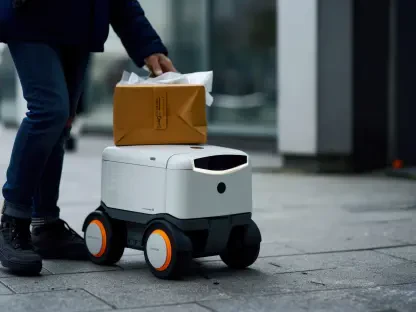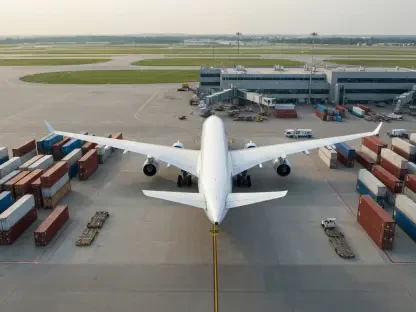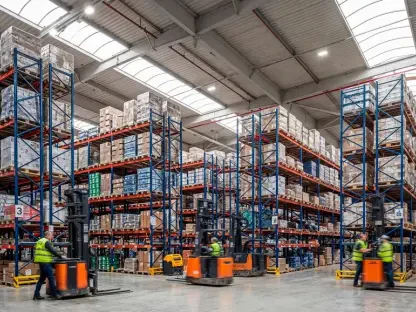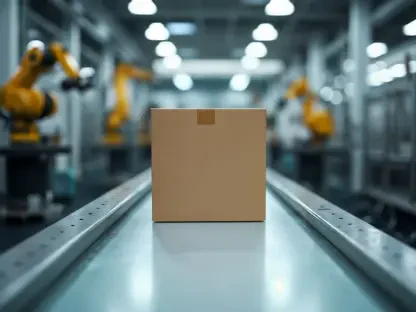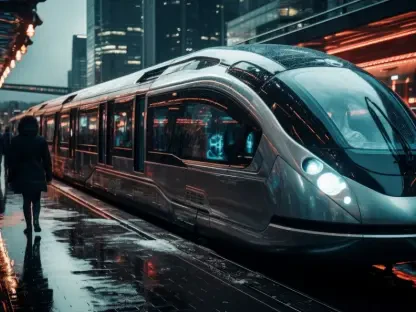With a reputation in the logistics and supply chain industries that spans decades, Rohit Laila has been at the forefront of technology and innovation. Today, we delve into the latest developments in industrial robotics. Rohit shares insights into ABB Robotics’ expansion of their robot portfolio and what this means for manufacturers striving for greater flexibility, performance, and sustainability.
Can you tell us what prompted ABB Robotics to expand its industrial robot range with the three new models?
ABB Robotics identified a growing need for more versatile and high-performing robots in industries ranging from automotive to manufacturing. By introducing the IRB 6730S, IRB 6750S, and IRB 6760, they are responding to these demands and enhancing their robot portfolio to cover a wider array of applications.
How do the IRB 6730S, IRB 6750S, and IRB 6760 fit into ABB’s overall strategy for next-generation industrial robots?
These models are an integral part of ABB’s strategy, designed to push the boundaries of flexibility and efficiency. They complement the existing range while offering manufacturers the tools needed to optimize operations, particularly in environments where space and efficiency are critical.
What specific features of these new robots enhance flexibility and performance for manufacturers?
The new robots bring extended vertical and horizontal reach, allowing them to handle larger payloads and work in tandem with other machines. This increases their applicability in various manufacturing settings and enhances overall productivity by making better use of available space.
Could you explain how the IRB 6730S and IRB 6750S increase production line density?
By being shelf-mounted, these robots maximize the use of vertical space, allowing more robots to be deployed in the same footprint. This approach not only enhances production density but also facilitates complex operations that require tight coordination between machines.
Why were the IRB 6730S and IRB 6750S designed for shelf-mounted installation, and what advantages does this bring to space-constrained environments?
Shelf-mounted installation enables these robots to operate in compact environments, significantly increasing efficiency without the need for additional floor space. This is particularly advantageous in urban settings or industries where facility expansion is limited.
What types of applications are the IRB 6730S and IRB 6750S best suited for, and in which industries?
These robots excel in activities like die casting, injection molding, and spot welding. They find application in automotive, construction, and general manufacturing sectors, where high payload capacity and precision are essential.
In what ways is the IRB 6760 optimized for press tending operations?
The IRB 6760 is tailored for mid-sized press lines, featuring enhanced speed and coordination capabilities. It’s particularly suited for industries like automotive manufacturing, where rapid, repetitive motions are crucial for efficiency.
How does the integration of the carbon-fiber tooling boom improve the IRB 6760’s performance in press tending?
This integration boosts performance by increasing the robot’s speed and reducing its mass, allowing up to 15 strokes per minute. This makes it one of ABB’s most efficient solutions for press tending tasks, significantly outperforming previous models.
Can you elaborate on the energy-saving capabilities of the OmniCore controller platform used in these new robots?
The OmniCore platform is designed to deliver up to 20% energy savings. It does so by optimizing power consumption across various operations, which supports sustainability goals while also reducing operating costs for manufacturers.
How does the path accuracy of the IRB 6750S with OmniCore impact its overall performance?
With path accuracy down to 0.9 mm, the IRB 6750S ensures precise execution in tasks requiring high accuracy, boosting overall production quality and reliability, especially in industries where precision is non-negotiable.
Can you provide examples of how these robots operate collaboratively in complex production environments?
These robots are engineered to work seamlessly with other robots and machines, capable of executing up to 80 spot welds on a car body in mere seconds, demonstrating their ability to enhance team-oriented manufacturing processes.
What are some technological innovations incorporated into these robots to enhance their capabilities?
The latest models integrate advanced materials like carbon fiber, improved motion control systems, and smart programming interfaces, all of which contribute to increased efficiency, speed, and precision across varying operational contexts.
How do these robots contribute to sustainability in manufacturing?
Beyond energy efficiency, these robots optimize material usage and reduce waste through precise operations, aligning with broader industry goals to minimize environmental impact while maintaining competitive production standards.
What impact do you foresee the introduction of these robots having on the automotive, electronics, and general manufacturing industries?
These introductions will likely lead to shifts in how production lines are managed, with increased automation leading to faster turnaround times, higher output, and possibly even innovations in product design due to the capabilities these robots offer.
Are there specific industry sectors where you anticipate these robots will be particularly transformative?
The automotive and electronics industries stand to gain significantly, given the demand for precision and speed. However, any manufacturing sector looking to optimize efficiency and reduce spatial constraints will find these robots to be transformative.
How does ABB plan to continue evolving its industrial robot offerings in the future?
ABB is committed to continuous improvement through research and development, intending to create even more capable robots that address future industrial challenges like increased automation and scalability.
What role do events like the Robotics & Automation Awards play in shaping the future of the robotics and automation sector?
These events are critical, providing a platform for sharing innovations, setting industry standards, and fostering collaborations that drive the sector forward. They inspire advancements and highlight the leading edge of robotics technology.
How does ABB engage with such events, and what outcome do you hope to achieve from this participation?
ABB actively participates in such events to showcase its technological advancements, and gain insights into trends and future directions. This engagement not only boosts brand recognition but also fosters partnerships that can lead to groundbreaking developments in the field.



